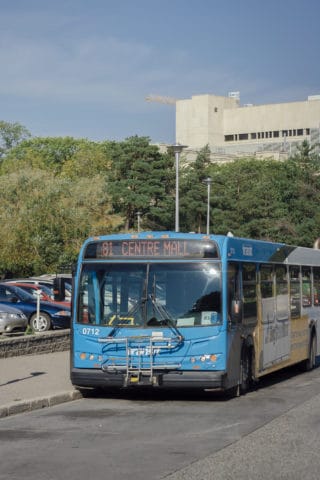With a new school year on the horizon, the perennial issue of poor public transit is sure to return as a topic of conversation for Saskatonians — students especially. While transit in the city is a headache, we still need to get on board with it sooner than later.
In May 2016, the StarPhoenix reported on the low ridership on city buses, noting that in 2015 the city didn’t rake in the fares it had budgeted for. In the article, Sarina Gersher of Bus Riders of Saskatoon — a special interest group that advocates for improvements to public transit — suggested that ridership would and will increase if city buses are regarded as being “efficient, reliable and accessible.”

We’re better off getting used to riding the bus sooner than later.
If city buses have a reputation for being inefficient, unreliable and inaccessible, it’s for good reason. Most anyone who rides city transit regularly will have their handful of bus horror stories: drivers who skip your stop, buses so late that they’re early and of course, the bus that doesn’t even show up at all. Furthermore, you now you’ve got an accessibility issue when people are driving to their bus stops because routes don’t extend out to their neighbourhoods.
In light of these shortcomings, it would be easy for many in the city to write off public transit and not even consider it as a viable option. After all, Saskatoon has historically been a motorist’s city anyways. This is also reflected by the low ridership figures. However, to pretend that the Bridge City isn’t already dependent on buses would be a grave error.
If you don’t believe that buses are essential to this city then you almost certainly weren’t a student in autumn of 2014 when a transit lockout left thousands seeking other means of transport to get to and from school, work and play.
Furthermore, personal car use is starting to become a thing of the past. An August 2016 report on transit planning from the University of Toronto underlined the importance of “shared mobility” — referring to a shift away from single ownership of transportation and towards communal resources.
At the risk of sounding pessimistic and shitty, it seems that we’re so used to bad or at least subpar public transit that we don’t even consider it an acceptable option, which then allows the quality to sit stagnant and further alienate potential riders. In a strange loop, it seems that Saskatoon’s transit is bad because not enough people rely on it, because it’s bad.
Saskatoon is a city on the grow. Becoming a larger metropolitan hub doesn’t mean pushing the limits of car-centric living. It means embracing the ways that urban centres operate. What we need to do is begin the move towards heavier reliance on public transit and make a statement that transit improvement needs to be a greater priority in urban planning. When riding the bus is a regular part of commuting and the possibility of a transit lockout is unacceptable to citizens, we’ll be in the right place.
For its part, Saskatoon Transit does seem to be addressing current issues. As of July 2016, 8th Street has adopted rapid transit to increase efficiency and combat transit delays, with buses as frequent as every 7.5 minutes during peak hours. Other high traffic streets throughout town are set to follow suit in 2017.
Likewise, bus routes also changed in July, being overhauled, extended, scrapped and created from scratch based on feedback and monitoring. Our dependence on Saskatoon Transit is only going to grow in the coming years, so we may as well start to embrace it and get what we want out of it.
—
Zach Tennent / Opinions Editor
Photo: Jeremy Britz / Photo Editor